In this engaging webinar hosted by 8fig, event marketing manager Katie Deter and partner marketing manager Sam Bell spoke with Klaidas Siuipys, CEO and founder of AMZ Bees.
Klaidas used a case study of how his client scaled from $50,000 a month to over $20 million a year to reveal some top growth strategies.
A Story of Growth
AMZ Bees is an agency primarily collaborating with U.S. and European private label brands to maximize their growth. Klaidas described the comprehensive account management services they offer, including strategy formulation, advertising, catalog management, and more.
The agency has successfully guided brands to multiple seven to eight-figure revenues, establishing them as leaders in their industries. Recently, one brand reached a staggering $1 million in sales in a single day. This was mainly thanks to a single product that they nurtured to become a market leader.
Product Selection and Brand Building
Klaidas described the start of their collaboration with this brand. He initially recognized the immense potential in a particular product they were offering. A product’s potential is not just dependent on its quality but also its uniqueness and potential audience. This product, for example, appealed to a broad spectrum of consumers, from young adults to grandparents. The wide-reaching audience base was vital to the company’s success.
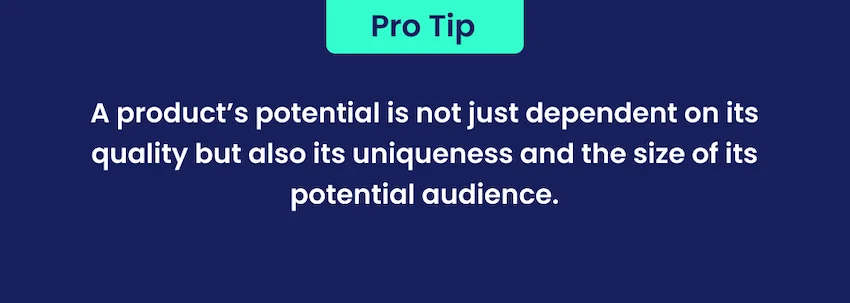
However, Klaidas cautioned that a good product is not a silver bullet to achieving millions of dollars in annual revenue on Amazon. It’s just a part of a multifaceted success strategy.
Building a Solid Foundation
Klaidas recalled the early days of the partnership in 2020, which were dedicated to laying the foundation for growth. The brand was considerably under-optimized, with few advertising efforts and low sales figures. Despite the challenges, they had managed to sustain a steady revenue stream. Klaidas saw greater potential, though.
Their product portfolio then included multiple products, with revenues hovering around $28 – 30,000 monthly from one of their products. Despite this, the overall performance of their other products was low, contributing to only a small portion of the total revenue.
Navigating the Initial Challenges
Klaidas described the initial challenges they faced with the brand. Despite issues like poor account structure (ACL), incorrectly linked categories, split variations, and even some product suspensions, the brand had managed to generate a stable monthly revenue, mainly through offline marketing. This was an impressive feat, especially for a small business.
AMZ Bees set the primary objective for 2020: to create an effective advertising structure that could propel the already successful product to new heights. Klaidas added that this phase was about fixing errors and building an advertising strategy that would further boost the brand’s success.
Klaidas’s team therefore focused on backend SEO, ensuring that products were categorized correctly on Amazon’s platform, working to fix discrepancies in product categorization. They hoped to enhance advertising performance and organic rankings, increasing visibility.
Following these adjustments, the brand witnessed a spike in sales the following month, translating into an additional profit of around $30,000.
In addition to the SEO optimization, Klaidas’s team worked to improve the brand’s Pay-Per-Click (PPC) strategy. This involved organizing campaigns more efficiently by separating keywords into distinct ad groups.
Product Complexities and Stocking Issues
The summer was a slower period. Klaidas mentioned repeated stockouts and other logistical problems that arose due to the sudden surge in sales. These challenges are not unique to this brand, but rather a common occurrence across various businesses on the path toward growth.
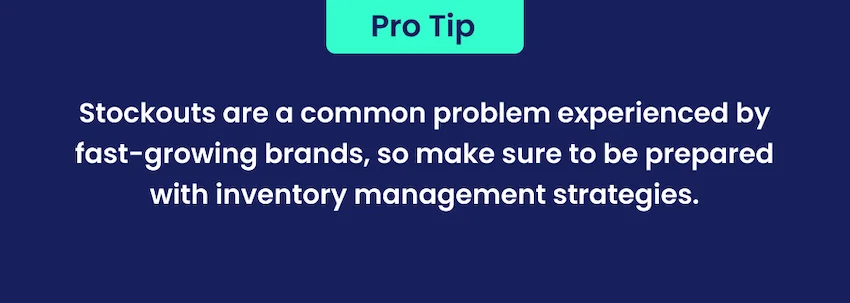
Despite the setbacks, the team began to understand how to manage stock levels effectively. In addition, Klaidas discussed a specific incident in the Japan market, where efforts to curb patent infringement led to a worldwide product suspension by Amazon. This suspension translated to daily profit losses of $1,500.
Inventory Management and Labeling Strategies
Klaidas then addressed inventory management strategies. They initially used Fulfillment by Amazon (FBA), but needed a more flexible and cost-effective approach, especially during stockouts. This led to the Alternative Business Model (ABM) structure where products are shipped from their own warehouse. It’s a strategy that can accommodate price fluctuations while ensuring product availability.
Next, Klaidas emphasized the significant cost-saving product labeling transition they made in 2021. They switched from Amazon’s labeling services to using manufacturer UPC labels, saving tens of thousands of dollars.
The brand continued to achieve high sales while managing new issues on an almost daily basis. They managed to secure Amazon’s Best Seller Badge in their subcategory, which played a crucial role in improving conversion rates.
The brand was featured on national television in the US at the end of December. This led to their biggest sales day ever, accumulating nearly $100,000 in sales. They went out of stock on most products, and Klaidas ended up having to personally oversee shipments from their Chinese warehouse to meet demand.
The brand expanded its advertising outreach by incorporating sponsored videos, brands, and displays, moving beyond their initial focus on sponsored products. This evolution in strategy allowed for better control over advertising structure and bolstered sales growth. Towards the end of 2020, they noticed a decrease in the advertising cost due to higher Q4 sales, and a boost in keyword numbers. This played a part in their impressive annual revenue of $2.8 million. December alone accounted for $1.2 million.
In just six months, the brand grew from $50,000 to $1.2 million in monthly revenue. They attribute this growth to solid profit margins and unique products with lower costs and higher prices.
Diversifying Sales Strategies To Boost Conversion
They started 2021 with a focus on restocking and enhancing their product listings. They improved their copy, infographics, and A+ content for SEO and conversion optimization. The brand also shifted their focus from advertising to preparing for the next Q4. This involved exploring different sales strategies such as Lightning Deals. These deals, according to Klaidas, turned out to be highly successful, driving significant traffic and boosting conversion.
Klaidas then introduced the use of Demand Side Platform (DSP), which contributed an additional $1.5 million in sales, a growth of around 10%. Initially managed through Perpetua, they later moved this in-house. DSP was particularly effective in retargeting at the bottom of the funnel.
The brand utilized an intricate advertising strategy, where each target within their manual campaigns has its own designated campaign, allowing them to conduct detailed targeting. They implemented an extensive testing process, with approximately 25,000 campaigns tested over the account’s lifetime. This granular approach, where each keyword gets an ad group, allows for superior optimization levels. It gives them the ability to boost specific high-performing keywords without promoting the entire campaign, eventually building each campaign into a powerhouse over one or two years.
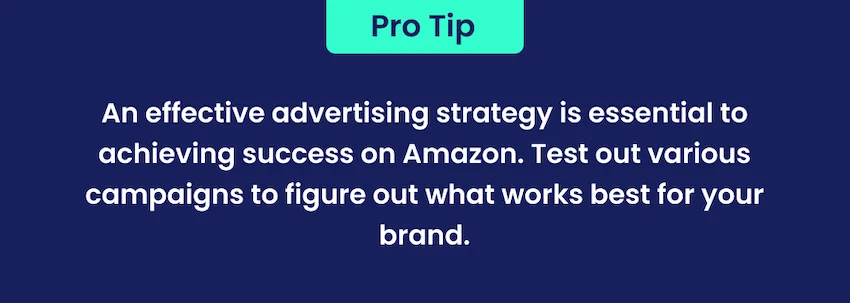
Q4 of 2021 was a very intense period. Amazon Prime Day 2021 was a step up from 2020, and they found that Prime Exclusive Discounts worked better than Lightning Deals.
In 2022, the brand succeeded in reaching the top spot in their category’s Best Seller Rank (BSR). They also hit a sales peak of $675,000 in a single day, marking the highest sales peak in the brand’s history.
The brand was able to grow from $3 million to $20 million within a year. This growth naturally brought with it inventory challenges. This often occurs due to the unpredictability of such rapid growth and the financial investment needed to maintain inventory levels.
Inventory Challenges and Successes
In the early months of 2022, despite frequent out-of-stock events and inventory challenges, the brand continued to generate significant revenue. They nearly hit $1 million in January. Their efforts paid off, and they secured a Top Deal on Amazon, a goal they had been working towards since the product launch.
This Top Deal propelled them to the front page of Amazon. The increased visibility led to sales of $841,000 – a figure surpassing their Black Friday earnings from two months prior.
Stockout Implications and Strategy Shifts
Sam asked Klaidas about the potential position drop due to frequent stockouts. Klaidas explained that their unique setup, where each variation holds its rank, cushioned them against this. However, the stockouts did lead to lost sales opportunities, as customers couldn’t find the products they desired.
As they moved into 2023 with adequate inventory, the brand saw an impressive $1.5 million in sales in January alone. They also began expanding into the European market. This process had begun in 2021, and it took about a year to set the groundwork.
Klaidas described the company’s marketing strategies, with tens of thousands of active campaigns, especially around Q4. They are in a continuous cycle of testing new keywords and launching new campaigns. The brand also leveraged Amazon Live sessions multiple times a day to engage with customers. They collaborated with influencers to broaden their reach, too.
They shifted to in-house management of reimbursements, resulting in a significant increase in the amount reclaimed from Amazon in 2023, as compared to using another provider the previous year.
Klaidas noted a change in customer behavior following the introduction of an October Prime Day by Amazon, which negatively affected their anticipated sales growth in September, traditionally a period when people start buying Christmas gifts.
Notable Growth and Team Achievements
Klaidas is proud of his team’s success in growing a brand from $600,000 to $30 million a year. He highlighted AMZ Bees’ role in facilitating a $20 million profit growth for their clients the previous year.
In 2023, they are focusing on releasing new product designs and variations almost every quarter. They are also in the process of introducing new products that align with the tastes and preferences of their existing customer base. Klaidas is particularly enthusiastic about one new product, which has the potential to generate between $10 and $20 million in annual revenue.
That being said, there has been a significant drop in conversion rates despite a consistent sales volume. The brand is now working to improve conversion rates.
Looking forward to Q4, they anticipate success in leveraging influencer marketing to boost product visibility. They anticipate launching new products later in the year, having resolved stock issues that plagued them in the past. They are ready to meet seasonal demands and expect continued growth in 2023.
Klaidas predicts earnings of around $34-$35 million for 2023. Although he acknowledged the uncertainty surrounding customer behaviors in Q4, a successful Prime Day indicates promising prospects.
Inventory and Supply Chain Challenges
Sam noted that even larger brands face inventory and supply chain challenges, particularly when experiencing hypergrowth. He stressed the importance of avoiding stockouts and staying aligned with supply chain insights to navigate potential obstacles.
Sufficient working capital is needed to maintain healthy inventory levels and a well-functioning supply chain. Therefore, having a solid funding plan or a reliable financing partner can help maintain inventory and keep the supply chain running smoothly. This allows the business owner to concentrate on other vital areas of growth and expansion.
Best Practices for Supply Chain Management
Sam outlined some best practices for 2023, emphasizing the need for careful planning and the importance of preparing for unforeseen events. He suggested having a few months of safety stock to deal with potential sales spikes or market disruptions, which are often outside of a business’s control. In addition, quick solutions like air freight can prevent stockouts, even though it might lead to a loss on those products. It is also wise to find reliable partners.
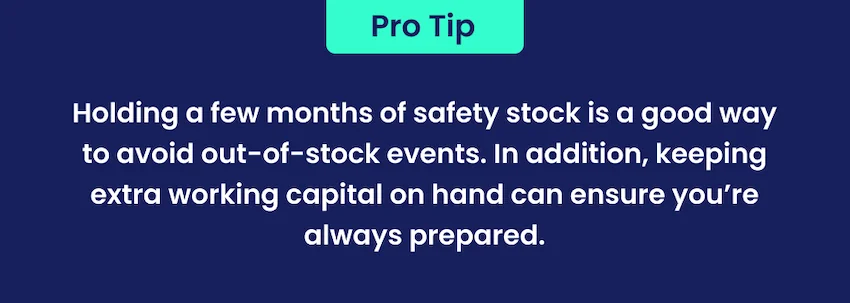
Lastly, Sam mentioned certain tools that can help businesses stay more in sync with their supply chain. These methods are often more effective than methods like spreadsheet management, paving the way for more insightful data analysis and better decision-making.
8fig: A Growth Partner That Offers More Than Funding
Sam introduced a feature on 8fig’s platform called the Line Lab, which allows users to input their cash needs over time, providing insights into their future supply chain costs. It serves as a flexible tool to help visualize cash flow and manage financial planning more effectively. With this tool, 8fig helps businesses manage potential cash flow issues and inventory concerns so that they can concentrate on business growth.
Other features available on the platform include sales forecasting tools that help understand sales velocity, cash flow breakdowns, and other functionalities that provide deeper insights into business operations.
Avoiding Stockouts
Since stockouts negatively impact customer trust and retention and can greaty affect the business’s revenue, it’s important to do your best to avoid them. Sam therefore proposed keeping a three to six months safety stock to cater to unexpected sales spikes and meet increased demand.
Klaidas shared a strategy he finds effective in managing stock levels and reducing costs: using Amazon’s Warehousing and Distribution. They offer automatic fulfillment, which gets triggered when the stock levels on Amazon start to dwindle. Products are automatically shipped from the Amazon warehouse where costs are usually lower. This approach helps prevent overstocking and keeps the costs down.
Sam further advocated for maintaining a cash reserve for emergency inventory purchases, emphasizing the necessity of staying nimble and flexible in business operations. He also noted that having the right partners is a huge asset in achieving your business goals.
Q&A
At this point, Katie turned to questions from participants.
What advice do you have for someone who sells a seasonal product whose window of growth is shorter?
Klaidas recommended utilizing a 3PL, or third-party logistics provider, especially when dealing with seasonal products. He suggested striving to outrank competitors during the offseason by competing for organic positions in anticipation of the peak season. Leveraging sales from non-seasonal periods can help build a strong position for the seasonal sales peak.
What should I keep in mind when expanding to international markets?
Klaidas warned against expanding too quickly and to too many markets at once due to complex paperwork and compliance requirements specific to each country.
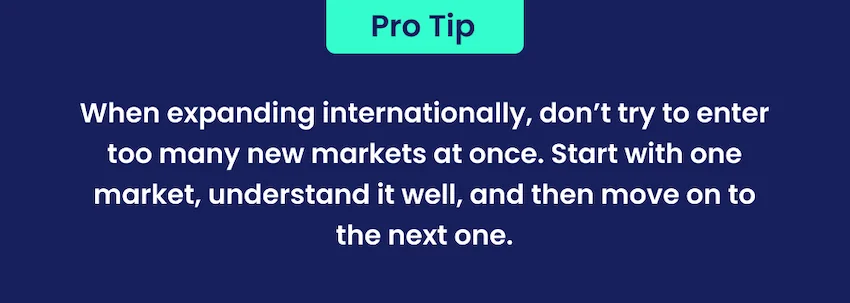
Instead, he advised starting with one market, understanding it well, and then expanding to others. Furthermore, he advised working with specialized Amazon translation companies for product listings and utilizing tools that allow for market-specific visuals to enhance customer experience.
There is also significant foreign exchange risk when expanding internationally. Researching and exploring options to mitigate this risk is therefore essential.
Do you recommend using AI tools to improve listing descriptions?
While acknowledging the popularity of these trends, Klaidas said that he prefers a more traditional approach.
He advised against chasing fleeting trends. Instead, he urged businesses to rely on professional copywriters with a deep understanding of Amazon SEO to craft product listings that not only comply with Amazon’s guidelines but resonate well with the target audience.
He also pointed out that a careful and logical analysis of the product, paired with a good understanding, can lead to better results than relying on AI tools.